Solar eclipse of September 1, 2016
An annular solar eclipse occurred on September 1, 2016. A solar eclipse occurs when the Moon passes between Earth and the Sun, thereby totally or partly obscuring the image of the Sun for a viewer on Earth. An annular solar eclipse occurs when the Moon's apparent diameter is smaller than the Sun's, blocking most of the Sun's light and causing the Sun to look like an annulus (ring). An annular eclipse appears as a partial eclipse over a region of the Earth thousands of kilometres wide. In this case, annularity was observed in Gabon, Congo, Democratic Republic of the Congo, Tanzania, Mozambique, Madagascar, and Reunion.,
| Solar eclipse of September 1, 2016 | |
|---|---|
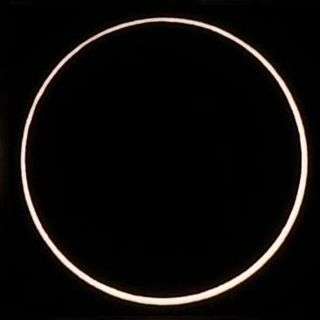 From L'Étang-Salé, Réunion | |
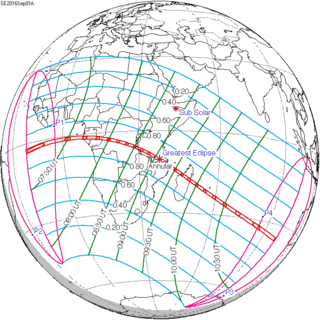 Map | |
| Type of eclipse | |
| Nature | Annular |
| Gamma | -0.333 |
| Magnitude | 0.9736 |
| Maximum eclipse | |
| Duration | 186 sec (3 m 6 s) |
| Coordinates | 10.7°S 37.8°E |
| Max. width of band | 100 km (62 mi) |
| Times (UTC) | |
| Greatest eclipse | 9:08:02 |
| References | |
| Saros | 135 (39 of 71) |
| Catalog # (SE5000) | 9544 |
Visiblilty
Animated Path
Images
 Composition images from L'Étang-Salé, Réunion
Composition images from L'Étang-Salé, Réunion.jpg) Time lapse images from Les Avirons, Réunion
Time lapse images from Les Avirons, Réunion.jpg) Partial from Walvis Bay Airport, Namibia, 7:15 UTC
Partial from Walvis Bay Airport, Namibia, 7:15 UTC.jpg) Annularity from Kalemie, DR Congo, 7:46 UTC
Annularity from Kalemie, DR Congo, 7:46 UTC.jpg) Partial from Port Elizabeth, South Africa, 9:35 UTC
Partial from Port Elizabeth, South Africa, 9:35 UTC
Related eclipses
Eclipses of 2016
Solar eclipses ascending node 2015-2018
Solar eclipses from 2015 to 2018
This eclipse is a member of a semester series. An eclipse in a semester series of solar eclipses repeats approximately every 177 days and 4 hours (a semester) at alternating nodes of the Moon's orbit.[1]
| Solar eclipse series sets from 2015–2018 | ||||||
|---|---|---|---|---|---|---|
| Descending node | Ascending node | |||||
| Saros | Map | Gamma | Saros | Map | Gamma | |
120._(32844461616).jpg) Longyearbyen, Svalbard | 2015 March 20 Total |
0.9453 | 125 | 2015 September 13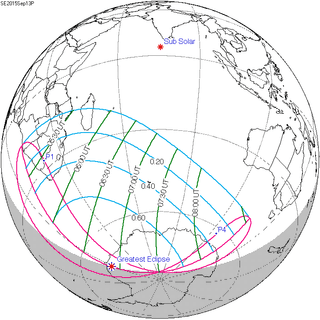 Partial |
-1.1004 | |
| 130 Balikpapan, Indonesia | 2016 March 9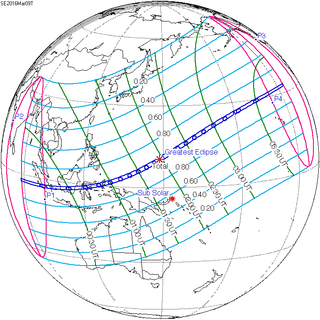 Total |
0.2609 | 135 L'Étang-Salé, Réunion | 2016 September 1 Annular |
-0.3330 | |
140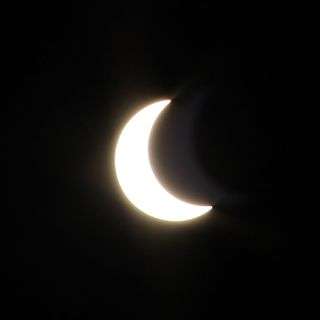 Partial from Buenos Aires | 2017 February 26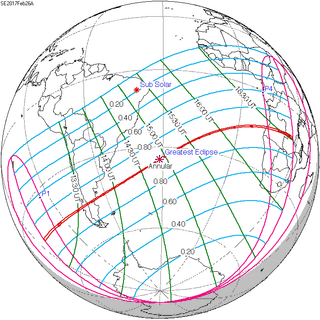 Annular |
-0.4578 | 145.jpg) Casper, Wyoming | 2017 August 21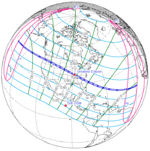 Total |
0.4367 | |
150.jpg) Partial from Olivos, Buenos Aires | 2018 February 15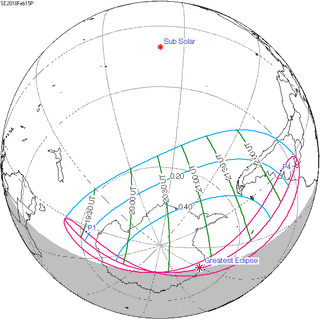 Partial |
-1.2117 | 155.jpg) Partial from Huittinen, Finland | 2018 August 11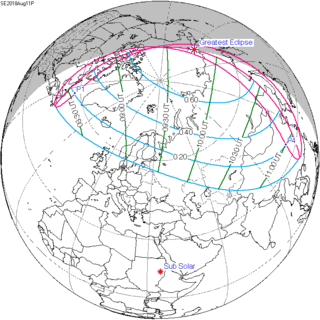 Partial |
1.1476 | |
| Partial solar eclipses on July 13, 2018, and January 6, 2019, occur during the next semester series. | ||||||
Saros 135
It is a part of Saros cycle 135, repeating every 18 years, 11 days, containing 71 events. The series started with partial solar eclipse on July 5, 1331. It contains annular eclipses from October 21, 1511 through February 24, 2305, hybrid eclipses on March 8, 2323 and March 18, 2341 and total eclipses from March 29, 2359 through May 22, 2449. The series ends at member 71 as a partial eclipse on August 17, 2593. The longest duration of totality will be 2 minutes, 27 seconds on May 12, 2431.
| Series members 27–43 occur between 1800 and 2100: | ||
|---|---|---|
| 27 | 28 | 29 |
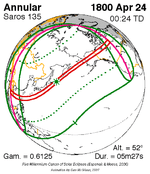 Apr 24, 1800 |
 May 5, 1818 |
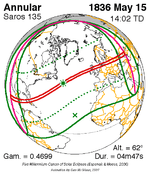 May 15, 1836 |
| 30 | 31 | 32 |
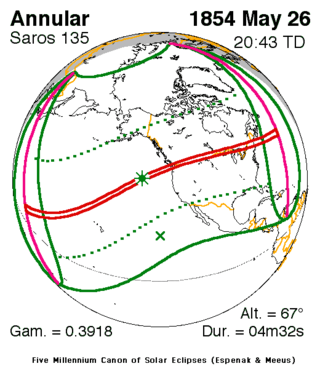 May 26, 1854 |
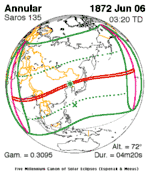 Jun 6, 1872 |
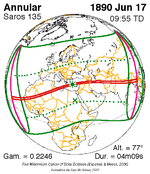 Jun 17, 1890 |
| 33 | 34 | 35 |
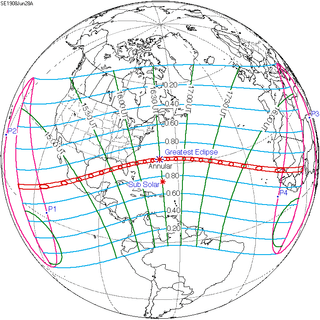 Jun 28, 1908 |
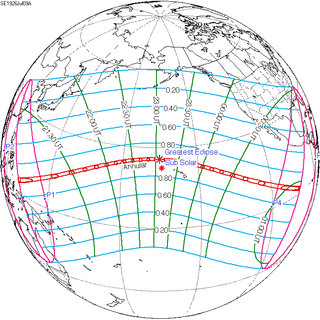 Jul 9, 1926 |
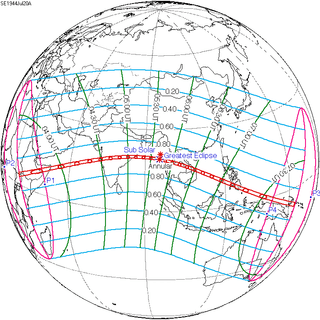 Jul 20, 1944 |
| 36 | 37 | 38 |
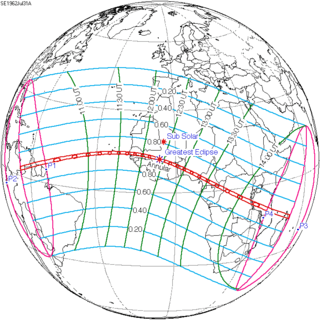 Jul 31, 1962 |
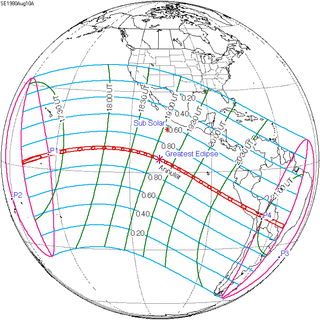 Aug 10, 1980 |
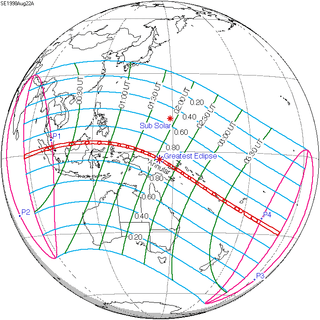 Aug 22, 1998 |
| 39 | 40 | 41 |
 Sep 1, 2016 |
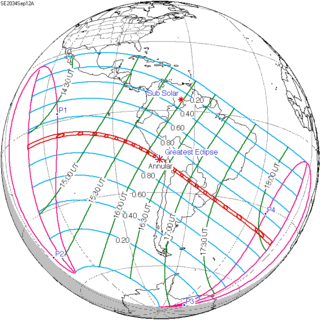 Sep 12, 2034 |
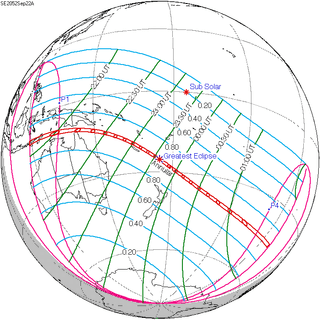 Sep 22, 2052 |
| 42 | 43 | |
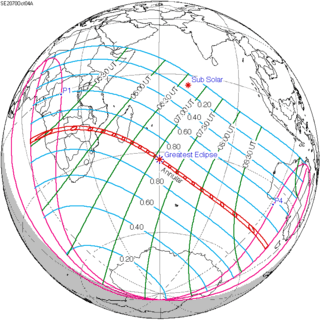 Oct 4, 2070 |
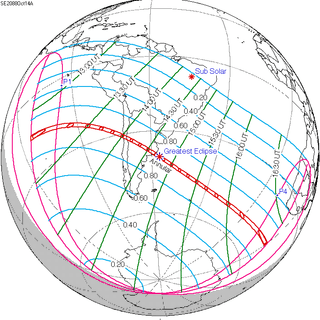 Oct 14, 2088 | |
Metonic series
The metonic series repeats eclipses every 19 years (6939.69 days), lasting about 5 cycles. Eclipses occur in nearly the same calendar date. In addition, the octon subseries repeats 1/5 of that or every 3.8 years (1387.94 days). All eclipses in this table occur at the Moon's ascending node.
| 21 eclipse events between June 21, 1982, and June 21, 2058 | ||||
|---|---|---|---|---|
| June 21 | April 8–9 | January 26 | November 13–14 | September 1–2 |
| 107 | 109 | 111 | 113 | 115 |
| June 21, 1963 | April 9, 1967 | January 26, 1971 | November 14, 1974 | September 2, 1978 |
| 117 | 119 | 121 | 123 | 125 |
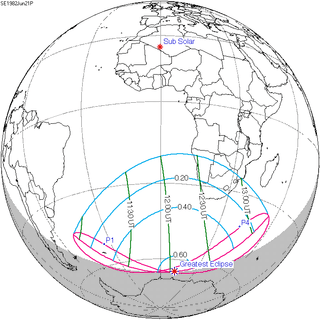 June 21, 1982 |
 April 9, 1986 |
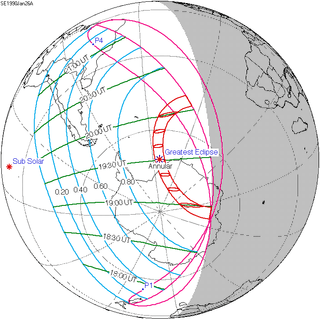 January 26, 1990 |
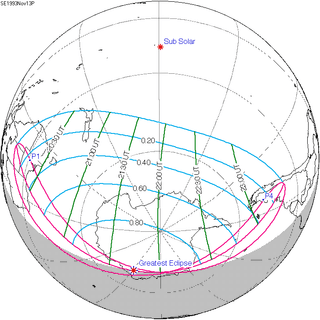 November 13, 1993 |
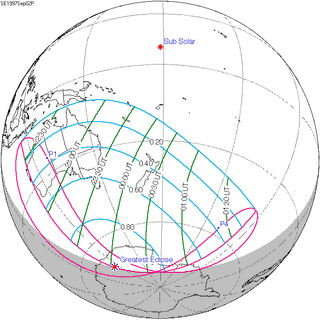 September 2, 1997 |
| 127 | 129 | 131 | 133 | 135 |
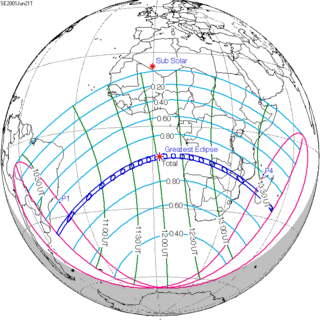 June 21, 2001 |
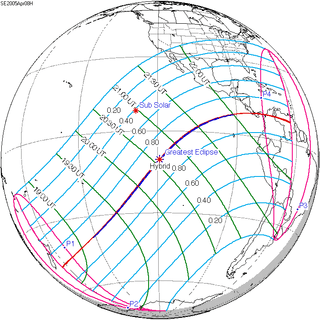 April 8, 2005 |
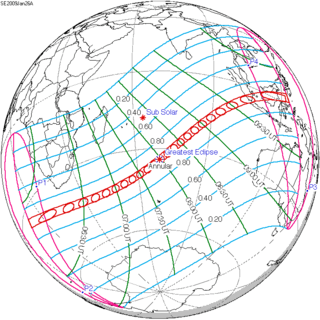 January 26, 2009 |
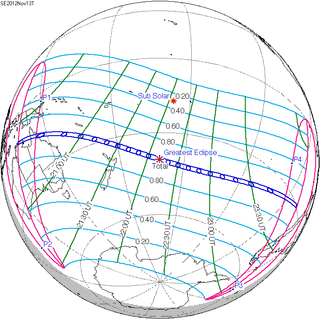 November 13, 2012 |
 September 1, 2016 |
| 137 | 139 | 141 | 143 | 145 |
 June 21, 2020 |
 April 8, 2024 |
 January 26, 2028 |
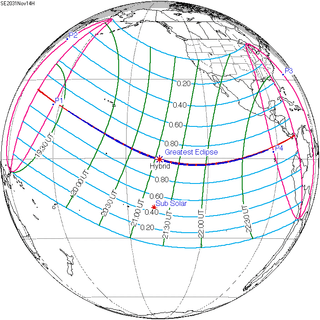 November 14, 2031 |
 September 2, 2035 |
| 147 | 149 | 151 | 153 | 155 |
 June 21, 2039 |
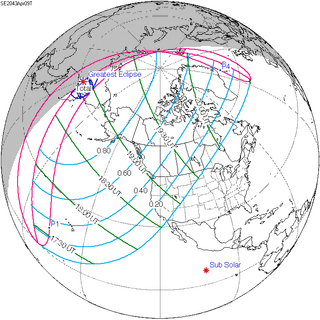 April 9, 2043 |
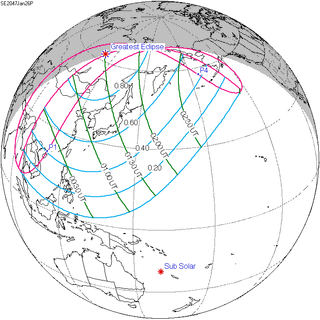 January 26, 2047 |
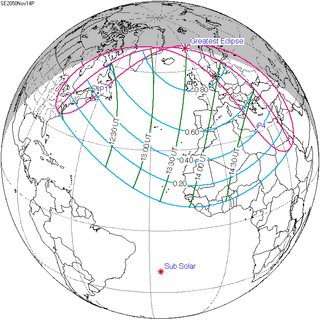 November 14, 2050 |
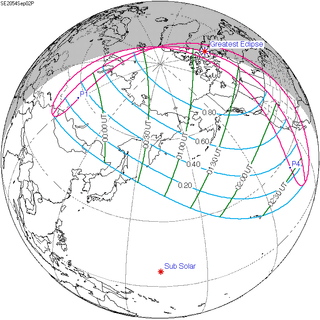 September 2, 2054 |
| 157 | ||||
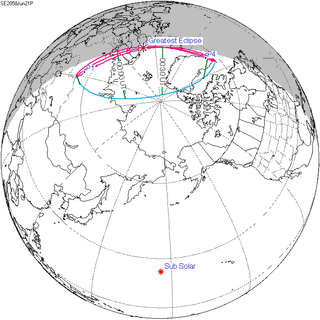 June 21, 2058 | ||||
Notes
- van Gent, R.H. "Solar- and Lunar-Eclipse Predictions from Antiquity to the Present". A Catalogue of Eclipse Cycles. Utrecht University. Retrieved 6 October 2018.
